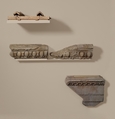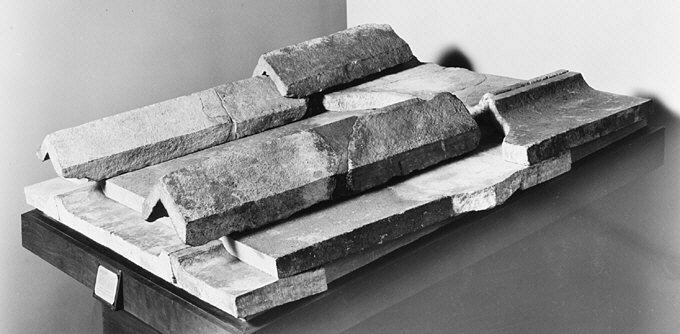Marble roof tiles from the Temple of Artemis at Sardis
These fragments have been pieced together to exemplify the size and arrangement of the original tiles used to roof the temple. In antiquity, most roof tiles were made of terracotta. The use of local marble for those of this massive temple is but one indication of its lavishness and of the tremendous expense afforded in its construction.
The tiles have the usual form of separate pan and cover tiles (see drawing) but are larger than most known roof tiles from mainland Greece. The flat pan tiles with raised rims were laid one next to the other, atop wooden rafters in overlapping rows. The triangular cover tiles fit over the raised rims of the pan tiles and protected the joints. The underside of the cover tiles have a knob at the front, and the tops of the corresponding cover tiles are notched at the back (see drawing). This measure ensured that the cover tiles fit together and did not slip out of place.
#1228. Overview: Sardis Architecture, Part 1
-
1228. Overview: Sardis Architecture, Part 1
-
1229. Overview: Sardis Architecture, Part 2
Playlist
Due to rights restrictions, this image cannot be enlarged, viewed at full screen, or downloaded.
This artwork is meant to be viewed from right to left. Scroll left to view more.



